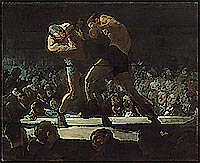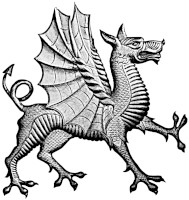The following is an excerpt from The Peculiar Institution by Kenneth M. Stampp
“These forms of white servitude [slavery of debtors, rogues, paupers, orphans, vagabonds the holding of indentured servants] were introduced into the English colonies almost as soon as [only the 1587 Roanoke colony seems to have been free of slaves] they were founded. Redemptioners paid their passage to America by binding themselves as servants for terms of from two to seven years. In the 17th century most of the servants were English; in the eighteenth century most of them were Germans, Swiss, Scots, Scotch-Irish, and Irish. Victims of kidnappers and convicts sentenced to transportation by English courts supplemented this flow of unfree labor. Probably more than half of the immigrants to the thirteen English colonies in North America came as bondsmen. [Estimates range from 60-90%.] After the horrors of the passage they often endured the cruelty of masters determined to extract the maximum of labor at a minimum of expense. Though they ultimately gained their freedom, they nevertheless made servitude an established labor system in all the colonies.”
Mister Stampp goes on to detail the role of Christianity and Islam, and their mutual hatred, in expanding chattel slavery to Roman proportions across the Old World, as each faith saw the other’s members as rightful property and irredeemable as humans. This attitude awaited the Negro slave, who was exploited by both parties in their own way. It is notable that the governments of Europe did absolutely nothing to defend, avenge, or rescue their poor costal dwellers, who were routinely enslaved by Turkish and Moorish pirates as far north as Scotland, in ships that were slower and less battle worthy than the ships of English privateers or warships.
In a very eye-opening segment, Stampp dispels the myth that whites could not handle labor in subtropical conditions, as it was white slaves that cleared and initially worked the land upon which negro slaves later toiled, and in many cases continued to work side-by-side with black slaves as indentures and low-paid seasonal labor.
On page 17 he cites a period source concerning the West Indies slave trade: “In these islands planters, merchants, and Negro traders shared in the profits extracted from the labor of black bondsmen.”
Modern academics and Liberals find refuge in the terminology adopted after the American Civil War and claim that bondsmen were white servants or indentures and that blacks were only slaves never servants or bondsmen, when the various terms were interchangeable, particularly servant, slave and bondsmen, which all had the same meaning: chattel.
The Peculiar Institution: Slavery in the Ante-Bellum South, by Kenneth M. Stampp. 1956, is highly recommended reading. Although the author fails to investigate certain aspects of slave labor in America, he does not deny or obfuscate, but rather sticks to his chosen subject of Southern slavery as it existed on the eve of the American Civil War in its mature state, only citing other forms of servitude when necessary.











